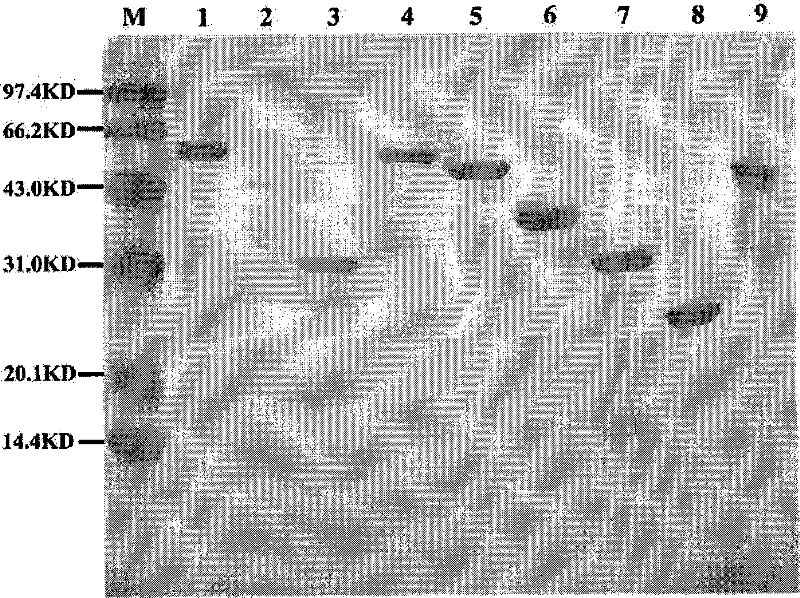Yersinia pestis protein and coding gene with immune protection function and its application
An immune protection and bacterial protein technology is applied in the application field of the preparation of plague vaccine, and achieves the effects of wide application prospect, enhanced immune protection range, and enhanced immune protection effect.
- Summary
- Abstract
- Description
- Claims
- Application Information
AI Technical Summary
Problems solved by technology
Method used
Image
Examples
Embodiment 1
[0056] Example 1. Screening of Yersinia pestis protein with immune protection function
[0057] The following method is used to screen the Yersinia pestis protein with immune protection function, and the specific process includes the following steps:
[0058] 1. Selection of candidate genes and cloning and expression in Escherichia coli
[0059] Using PSORTb, SignalP and ProtcompB software to analyze the cellular location of 4016 genes encoding proteins on the chromosome of Yersinia pestis CO92 strain (the first sequenced strain of Yersinia pestis), the results showed that 1006 genes encoded proteins were membrane-associated , secreted proteins; the transmembrane domains of these proteins were analyzed by TopPred software. Since proteins with multiple transmembrane domains are difficult to express in vitro, all proteins with more than 3 transmembrane domains were removed. Results 430 genes encoded proteins with less than 4 transmembrane regions; among these 430 genes, combine...
Embodiment 2
[0070] Example 2. Prokaryotic expression of Yersinia pestis protein with immune protection function and purification of expression product
[0071] The following prokaryotic expression method is used to obtain the Yersinia pestis protein with cellular immune protection function. The specific method is: using site-specific recombination and Gateway cloning technology, the corresponding gene coding sequence of the Yersinia pestis protein with immune protection function (YPO0606, YPO0612, YPO1914, YPO3119, YPO3047, YPO0420, YPO1377 and YPO3720) were cloned into the expression vector pDEST17 (invitrogen company), and the prokaryotic expression vectors of Yersinia pestis protein with immune protection function were obtained (respectively named as pDEST17-YPO0606, pDEST17-YPO0612, pDEST17 -YPO1914, pDEST17-YPO3119, pDEST17-YPO3047, pDEST17-YPO0420, pDEST17-YPO1377 and pDEST17-YPO3720), the Yersinia pestis protein YPCD1.05c coding sequence with immune protection function was cloned in...
PUM
 Login to View More
Login to View More Abstract
Description
Claims
Application Information
 Login to View More
Login to View More - R&D
- Intellectual Property
- Life Sciences
- Materials
- Tech Scout
- Unparalleled Data Quality
- Higher Quality Content
- 60% Fewer Hallucinations
Browse by: Latest US Patents, China's latest patents, Technical Efficacy Thesaurus, Application Domain, Technology Topic, Popular Technical Reports.
© 2025 PatSnap. All rights reserved.Legal|Privacy policy|Modern Slavery Act Transparency Statement|Sitemap|About US| Contact US: help@patsnap.com



